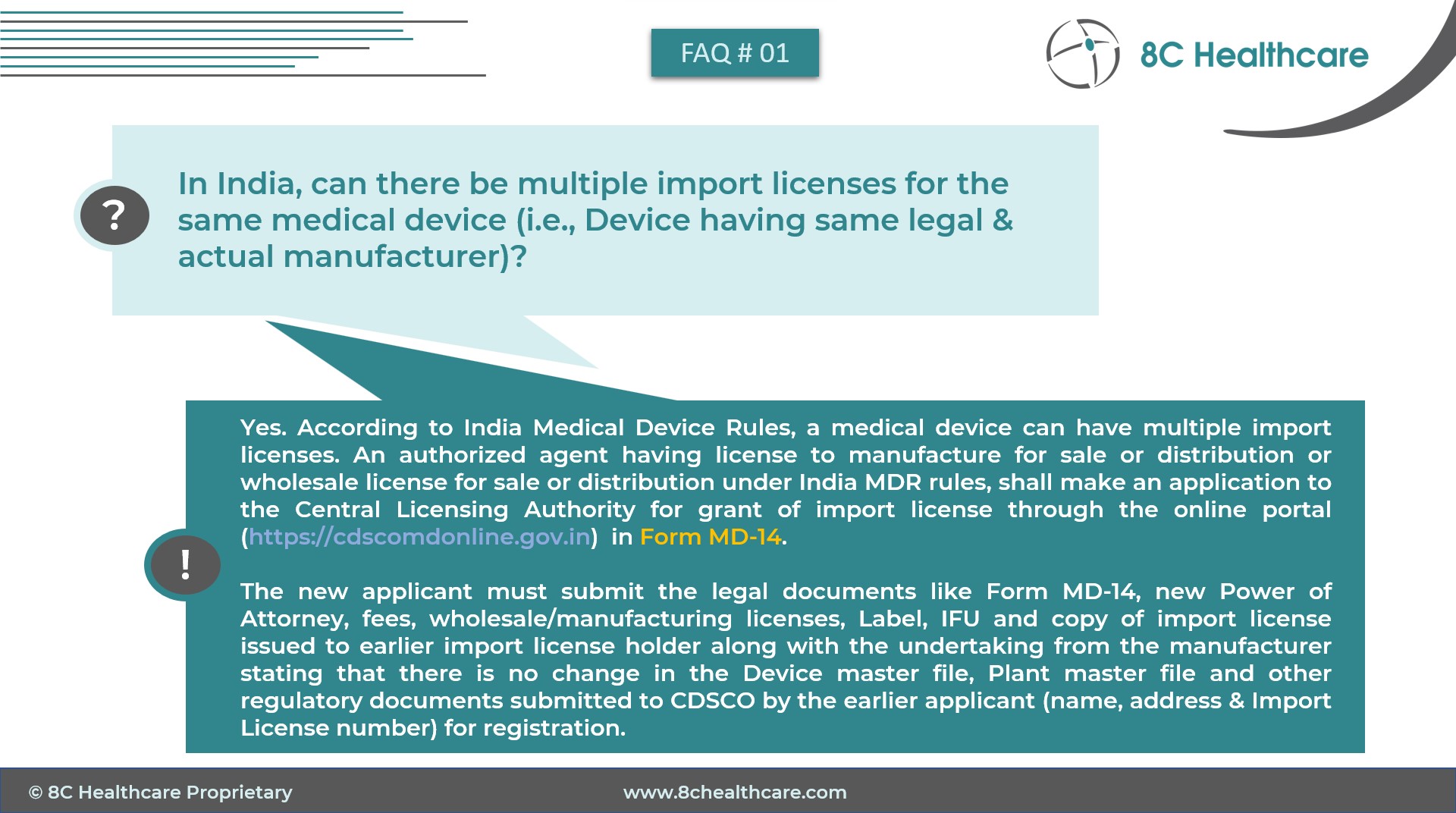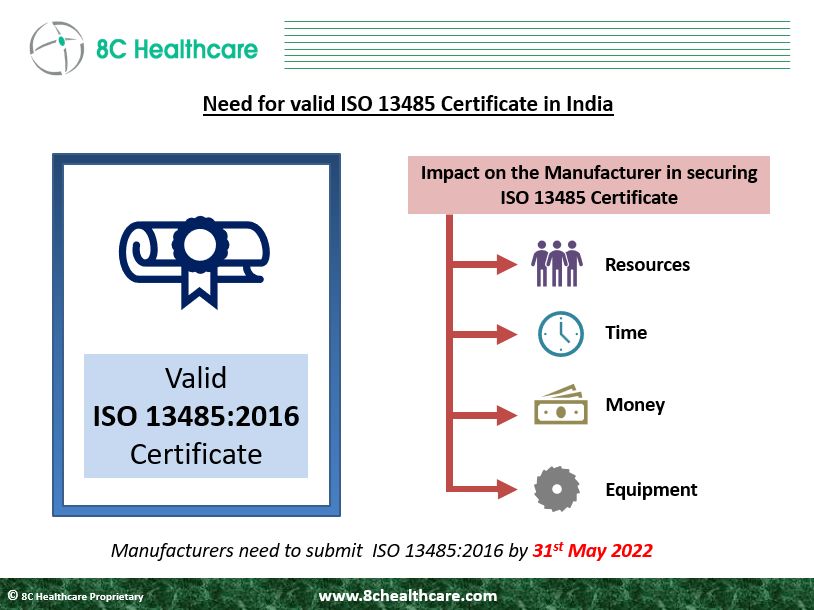European Union Medical Devices Regulation 2017/745 (EU MDR 2017/745)
The European Union Medical Devices Regulation 2017/745 (EU MDR 2017/745) represents a significant paradigm shift from its predecessor, the Medical Device Directive (MDD) in the regulatory framework for medical devices in European Union. The European Union Medical Device Regulation (EU MDR) is a comprehensive regulatory framework that governs the approval, manufacturing, and distribution of medical devices within the European Union.
Key Changes and Enhancements:
- Scope Expansion: The EU MDR broadens the scope of medical devices to include a wider range of products, incorporating those without a medical purpose but with similar functions.
- Risk Classification: Devices are classified based on potential risks, with higher-risk devices subject to more stringent requirements. This risk-based approach is designed to better align regulatory controls with device complexity and potential harm.
- Unique Device Identification (UDI): The EU MDR mandates the use of a Unique Device Identifier for traceability, making it easier to monitor and recall devices if necessary.
- Increased Clinical Evidence Requirements: Manufacturers are required to provide more extensive clinical data to support the safety and performance of their medical devices. This strengthens the scrutiny of devices before they enter the market.
- Post-Market Surveillance (PMS) and Vigilance: Robust post-market surveillance requirements are in place to monitor the performance of devices throughout their lifecycle. Manufacturers must promptly report any incidents, and competent authorities have enhanced powers for market surveillance.
- Notified Bodies and Conformity Assessment: The EU MDR establishes stricter requirements for Notified Bodies responsible for conformity assessment. Manufacturers must engage with these bodies to obtain the necessary certifications.
- Economic Operators: The roles and responsibilities of economic operators, including manufacturers, importers, distributors, and authorized representatives, are clearly defined to ensure accountability throughout the supply chain.
EU Medical Device Directives (EU MDD) to EU MDR Transition Timelines:
The EU MDR was officially adopted in 2017, and its full application began on May 26, 2021, marking a transition period from the MDD. The transition timelines for different categories of devices subject to a manufacturer submitting an MDR application by May 26, 2024, and having a signed formal written agreement with a Notified Body by September 26, 2024, are as follows:
- May 26, 2026: Class III custom-made implantable devices must complete the transition.
- December 31, 2027: Devices covered by valid MDD/AIMDD Certificates (as of March 20, 2023) that fall into Class III or Class IIb implantable devices (excluding well-established technologies under MDR) must complete the transition.
- December 31, 2028: Devices covered by valid MDD/AIMDD Certificates (as of March 20, 2023) and belonging to Class IIb devices (excluding Class IIb implantable non-Well Established Technologies (WET)), or Class IIa devices, or Class I sterile devices, or Class I devices with a measuring function, must complete the transition. Additionally, devices that did not require Notified Body certification under the MDD and for which the declaration of conformity was drawn up prior to May 26, 2021, but now require Notified Body certification under the MDR, must also complete the transition by this date.
Challenges and Considerations
- Resource Requirements: Compliance with the EU MDR demands significant resources, particularly for smaller manufacturers who may face challenges in meeting the increased regulatory burdens.
- Data Management and Documentation: The expanded requirements for clinical data and documentation necessitate robust data management systems to ensure compliance and streamline the regulatory process.
- Transition Period Challenges: Navigating the transition from the MDD to the EU MDR poses challenges for manufacturers, requiring careful planning and execution of necessary adjustments.
At 8C Healthcare, we offer comprehensive EU MDR compliance services to guide you through this transformative regulatory landscape.
How can 8C Healthcare help in EU MDR 2017/745 compliance of your medical device ?
- Classification and Conformity Assessment: We assist in accurately classifying your medical devices based on the new risk-based classification system outlined in the EU MDR. Our experts guide you through the selection of the appropriate conformity assessment route, ensuring alignment with regulatory requirements.
- Technical Documentation: Our team collaborates with you to compile robust technical documentation, including essential elements like clinical evaluations, risk assessments, and post-market surveillance plans.
- Notified Body Interaction: For devices requiring notified body involvement, we facilitate seamless communication and collaboration, ensuring a smooth conformity assessment process.
- Post-Market Surveillance: Compliance doesn’t end with obtaining the CE mark. We help you establish and maintain effective post-market surveillance systems to monitor your devices’ performance and safety continuously.
- Labeling and UDI Compliance: Our experts guide you in creating compliant labels that include the necessary information as per EU MDR requirements. We also ensure adherence to Unique Device Identification (UDI) regulations.
- Clinical Evaluation and Performance Studies: We support you in conducting thorough clinical evaluations and, if necessary, designing and executing performance studies to demonstrate the safety and efficacy of your medical devices.
Why Choose 8C Healthcare for EU MDR Compliance?
- Expertise: Our team consists of seasoned regulatory professionals with a deep understanding of EU MDR intricacies.
- Tailored Solutions: We tailor our services to your specific needs, ensuring a personalized approach to compliance.
- Efficiency: Our streamlined processes and project management help expedite the compliance journey without compromising on quality.
- Ongoing Support: We offer continuous support, keeping you updated on regulatory changes and helping you adapt to evolving requirements.
8C Healthcare List of EU Medical Devices Regulation 2017/745 compliance Services –
- Regulatory strategy and Regulatory Intelligence Reports for EU MDR compliance
- EU MDR 2017/745 Compliance and Transition
- Medical Device Classification and CE Marking
- ISO 13485:2016 Compliance
- ISO 14971:2019 Risk Management Documentation
- MDSAP Compliance and Certification
- Gap Analysis of technical documents & quality management systems
- Device documentation for Clinical Evaluation Reports (CER), Design History Files (DHF) etc
- Drafting Medical Device CE Technical File
- EUDAMED Compliance
- UDI Implementation
- EU MDR Labelling Compliance
8C Healthcare’s expertise spans across different Medical Device Categories
- General Class I Medical Devices
- Class I Measuring Devices (Im)
- Class I Reusable Medical Devices (Ir)
- Class I Sterile Medical Devices (Is)
- Class IIa and IIb Medical Devices
- Implantable and Non-Implantable Medical Devices
- Active Medical Devices
- Reprocessed Medical Devices
- Systems and Procedure Packs
- Drug Device Combinations (Article 117 Compliance)
- Software as Medical Device (SaMD)
Embark on your EU MDR compliance journey with confidence, guided by the expertise of 8C Healthcare. Our comprehensive services are designed to not only meet the regulatory requirements but also position your medical devices for success in the European market. Trust 8C Healthcare as your partner in navigating the complexities of EU MDR compliance.


